 Broadway Dance Lab, a new non-profit organisation, is helping kick-start new works of musical theatre by giving choreographers the tools they need, such as studio space and paid dancers, in order to try out concepts for new shows. Whilst music can inspire you no end, and a mirror can help you develop those all-important dance moves, a choreographer cannot create without the full set of assets they require.
Broadway Dance Lab, a new non-profit organisation, is helping kick-start new works of musical theatre by giving choreographers the tools they need, such as studio space and paid dancers, in order to try out concepts for new shows. Whilst music can inspire you no end, and a mirror can help you develop those all-important dance moves, a choreographer cannot create without the full set of assets they require.
With funds raised from donors and foundations, the goal is to offer choreographers artistic freedom to test new ideas ahead of creation. Broadway Dance Lab was founded by Josh Prince, the choreographer of Beautiful: The Carole King Musical and Shrek the Musical, aiming to develop the organisation to help ideas become successes. 2015 saw the organisation emerge, and six choreographers were supported in their work. These included Andy Blankenbuehler, Tony Award-winner for “Hamilton,” and American Ballet Theatre’s Marcelo Gomes, a dancer expanding into dance making.
Seven more choreographers are on the cards for 2016, able to develop ideas without having to worry about the cost of doing so, and without a clear output for the work in progress. The Broadway Dance Lab has consequently created a new model for developing shows in the US, from Prince’s own experience of practising his craft and trying to launch new ideas, without the costs of dancers and space.
Many professionals find that theatre requires a product on stage very quickly, leaving little room for trial and error. Countering extremely short rehearsal periods, as short as four to six weeks, the Broadway Dance Lab means experimentation can take place first, without the watchful eyes of directors or the cast themselves. Not every show is able to plan for, or afford, pre-production work, and in time, Broadway Dance Lab hopes this will develop into initiatives for young dancers, regional theatre choreographers and dancers with disabilities.
Category: News
Alvin Ailey American Dance Theater
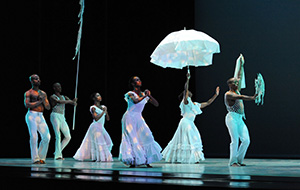 As one of the world’s most popular dance companies, last week the iconic Alvin Ailey American Dance Theater returned to the UK to delight and impress audiences all over the country. Its visit is the first in over six years, presenting 10 works during six exhilarating programmes, including its crowd pleasing Revelations masterpiece.
As one of the world’s most popular dance companies, last week the iconic Alvin Ailey American Dance Theater returned to the UK to delight and impress audiences all over the country. Its visit is the first in over six years, presenting 10 works during six exhilarating programmes, including its crowd pleasing Revelations masterpiece.
With a mixed bag of a programme, the pieces selected demonstrate the sheer versatility of both the dancers as individuals and the company as a whole. From hip hop and house dance, some African, to ballet and technical contemporary, Alvin Ailey American Dance Theater presented itself as hugely current, but with a resounding nod to the classics and its history.
Rennie Harris’ Exodus opened the evening with poignancy, but filled with stark energy. This gave way to club-type culture as the dancers showed a deliberate lack of rapport in the formations of the piece’s objectiveness. Ronald K. Brown gave the audience an irresistible blend of modern and African dance, the dancers performing each movement seamlessly and seemingly without effort. As they glided across the stage, their technique and passion was all too clear. After the Rain, a pas de deux to showcase just two of the dancers of the company that just can’t be faulted, premiered with Ailey in 2014. With choreography by Christopher Wheeldon it was a perfect prelude to Ailey’s Revelations. This enduring classic is a tribute to the many stages of African-American cultural heritage, performed each time with passion, vigour and style.
The company’s tour began with a two-week, four-programme season at Sadler’s Wells, London, and will conclude at Festival Theatre, Edinburgh on 19 October. The Autumn tour will see Alvin Ailey American Dance Theater visit 10 venues, presented by Dance Consortium.
Since 1958, Ailey’s performers have performed for over 25 million people in 71 countries, on a total of six continents. Alvin Ailey American Dance Theater was founded in 1958, recognised by the US Congress as a vital American “Cultural Ambassador to the World” in its presentation of constantly high-quality work and performances. Under the leadership of Artistic Director Robert Battle (the Company’s third artistic leader in its 60 year history), Ailey’s performances celebrate the human spirit through the African-American cultural experience and the American modern dance tradition.
Miss Saigon – 25th anniversary performance
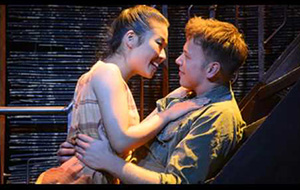 The 25th anniversary performance of Miss Saigon will be broadcast in cinemas across the UK on 16 October, it has recently been confirmed, with the iconic musical celebrating its quarter of a century by reaching even more audiences. Miss Saigon is Claude-Michel Schönberg, Alain Boublil and Richard Maltby’s musical loosely inspired by Puccini’s opera Madame Butterfly. The anniversary staging which was recorded for the broadcast saw 20,000 people try to book tickets within the first five minutes of tickets being released, demonstrating the extent of the musical’s popularity.
The 25th anniversary performance of Miss Saigon will be broadcast in cinemas across the UK on 16 October, it has recently been confirmed, with the iconic musical celebrating its quarter of a century by reaching even more audiences. Miss Saigon is Claude-Michel Schönberg, Alain Boublil and Richard Maltby’s musical loosely inspired by Puccini’s opera Madame Butterfly. The anniversary staging which was recorded for the broadcast saw 20,000 people try to book tickets within the first five minutes of tickets being released, demonstrating the extent of the musical’s popularity.
Ahead of the release into cinemas later in the year, a new trailer for the event has been released ahead of the screenings. The musical was recorded in front of a live audience at the Prince Edward Theatre in the West End where the musical was playing. This was done back in September 2014. The decision was made not to to digitally remove the stage microphones from the performers, in order to remind cinema viewers of the fact it is a stage production rather than a film.
Jonathan Pryce, Lea Salonga and Simon Bowman were some of the past Miss Saigon alumni who featured in the performance which was recorded for the big screen, and the cast of the show in London included Jon Jon Briones as The Engineer, Eva Noblezada as Kim and Alistair Brammar as Chris. According to producers, the cast delivered emotional performances so close-ups appear very natural, just like they were being shot for the cinema as opposed to being performed to a packed theatre.
As a result, the musical of Miss Saigon is incredibly cinematic as a theatrical experience, taking into account the score and staging too. There were also some additional covering shots filmed in January 2016 to be added to the cinema release.
Monopoly – the musical?
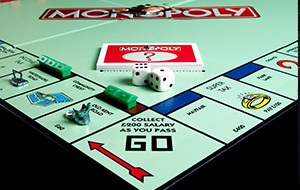 The popular and seemingly never ending board game is going to experience a facelift: when it starts playing on Broadway. Hasbro Inc. recently announced that it has partnered with producers the Araca Group to bring a new musical based on the 81-year-old board game to the Great White Way, a different concept indeed.
The popular and seemingly never ending board game is going to experience a facelift: when it starts playing on Broadway. Hasbro Inc. recently announced that it has partnered with producers the Araca Group to bring a new musical based on the 81-year-old board game to the Great White Way, a different concept indeed.
For the creatives, the Monopoly brand’s lack of a traditional, built-in storyline gives them more freedom to explore new, creative possibilities and experiment with the narrative too. Other major elements of the show also have yet to be developed, such as casting, musical scores and the creative concepts which will guide the entire musical. An option that is currently being batted around is the currently fashionable immersive experience, giving audiences the opportunity to be part of the show itself.
It is also rumoured that Hasbro hasn’t ruled out bringing any of its brands, which include Play-Doh, Stretch Armstrong and My Little Pony, to Broadway. This is very fitting considering the current make up of Broadway; of the 24 musicals currently on Broadway, only four are originals: Chicago, The Book of Mormon, Cirque du Soleil musical Paramour and Something Rotten! Adaptations began on Broadway in 1997, when The Lion King arrived; the potential of a ‘Monopoly the musical’ may just work.
It is clear that adaptations work in theatre, particularly film to musical as well as new concerts such as Monopoly. Universal is developing Back to the Future and Bombshell, the show-within-a-show about Marilyn Monroe from the TV series Smash. Sony is developing Tootsie and Warner Bros.’ Charlie and the Chocolate Factory, currently onstage in London, will open on Broadway in April. Warner is also developing stage productions based on Beetlejuice, 17 Again, Dave and Dog Day Afternoon. In 2013, Fox partnered with a Broadway producer to develop musicals based on its films, and are currently developing The Devil Wears Prada and Mrs Doubtfire. Watch this space!
Dancing through summer
 As we move into September, it looks as though summer will soon be on its way out. For many dance teachers, the summer means they are able to have a well deserved break, and can finish those final admin tasks for their classes. However, by the time the end of August comes around it means it is almost time to welcome students back, who may or may not have been keeping up their dance practice over the summer.
As we move into September, it looks as though summer will soon be on its way out. For many dance teachers, the summer means they are able to have a well deserved break, and can finish those final admin tasks for their classes. However, by the time the end of August comes around it means it is almost time to welcome students back, who may or may not have been keeping up their dance practice over the summer.
For students and teachers alike, dance can be as mental as it is physical. You may find you need to mentally prepare for long nights at dance class, long weekends in rehearsal, and nights after dance doing homework for those still in school. Getting your mind right is important as it means you are able to focus and dedicate your all to dance by the time it comes around. You may want to think about what went well over the last dancing year, and what it might be good to work on. Collaborating with your teacher (or students!) can help focus on how to make the coming year even more successful.
Whilst it is important to enjoy and relax during the time you have left, you might also want to start preparing the body physically too. For teachers this might mean working more cardio into your daily routine to bring your fitness levels back up, and for dancers this might mean adding some time to your day for stretching the body out gently. You may have been lucky enough to attend a summer intensive or additional dance classes, so try and apply any advice or corrections you may have had during that time. Hopefully you will have been freshly inspired to work hard in the coming year.
Burn the Floor UK premiere
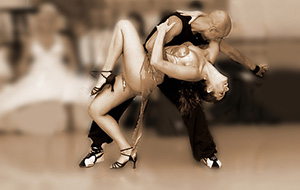 The newest UK premiere from Burn the Floor – named Fire in the Ballroom – will descend on London’s The Peacock from 18 October – 5 November later this year. Previously named “an exhilarating ballroom extravaganza” in the US, London audiences will too be able to delight in this new production off the back of the successful Burn the Floor.
The newest UK premiere from Burn the Floor – named Fire in the Ballroom – will descend on London’s The Peacock from 18 October – 5 November later this year. Previously named “an exhilarating ballroom extravaganza” in the US, London audiences will too be able to delight in this new production off the back of the successful Burn the Floor.
The premiere of the international smash-hit Fire in the Ballroom will see a rebellious, high-energy ballroom dance spectacle, which adds to the numerous similar productions seen at London’s Peacock. However, with its infectious sense of fun, featuring 14 champion dancers and breathing new life into classics such as the Viennese waltz, foxtrot, samba, tango and jive, this Burn the Floor premiere will whip up the stage and delight a variety of audiences.
The production will be backed by a live band, with singers who will re-interpret a diverse range of music, as varied as Santana to Led Zeppelin. There will be free post-show ballroom classes on 25 October and 1 November, enabling keen audience members to try their hand at some of the dance moves they will have seen on stage, while adrenaline and enjoyment are still running high. This production of Fire in the Ballroom has been created over the past two years by choreographer Peta Roby, based on original choreography by Jason Gilkison. It aims to push dance boundaries to new heights in its new take on the social traditions of these well-known dance genres.
Gilkison and Roby are World, British and International Latin Dance Champions and have danced for over 35 years. Gilkison has previously worked on So You Think You Can Dance and is also Director of Choreography on BBC’s Strictly Come Dancing. Since 1999, the original Burn the Floor has performed in over 150 cities across 29 countries and entertained audiences in London, New York, Shanghai, Sydney, Tokyo and Cape Town.
Dancing robot world record
 Over 1,000 robots have performed a synchronised dance routine in China, and consequently broken a world record. 1,040 identical robots, each under 44 centimetres in height, began their synchronised dance routine in Qingdao city. 1,007 finished the challenge, setting a new Guinness World Record for the largest simultaneous robot dance which is nearly double the previous record of 540, again achieved in China.
Over 1,000 robots have performed a synchronised dance routine in China, and consequently broken a world record. 1,040 identical robots, each under 44 centimetres in height, began their synchronised dance routine in Qingdao city. 1,007 finished the challenge, setting a new Guinness World Record for the largest simultaneous robot dance which is nearly double the previous record of 540, again achieved in China.
The dancing machines broke the record at the Qingdao Beer Festival, controlled using just one mobile phone. To break the record, they had to dance for a full minute, however some robots were disqualified because they either did not dance or fell over. The majority of the robots completed the routine in unison as an uber-disciplined mechanical dance group. In order to break the record, the robots were fitted with special encryption technology in order to reduce radio frequency inference from other mobile phones and Bluetooth devices nearby, to aim for optimum success.
There have been many other world records achieved in dance over the years, featuring all different styles of dance.
The largest Kaikottikali dance was performed solely by women during the Malayalam festival of Onam, as one of the most popular South Indian dances from the Hindu communities of the state of Kerala. Led by choreographer Jitha Binoy, the successful attempt at the record formed part of the Thanima Arts Festival in Irinjalakuda (India) in January 2016. It saw 5,211 dancers perform in front of audience of over 55,000.
The most breakdance windmills in 30 seconds was achieved by LeeRoy Bailey, a break-dancing expert from the UK, performing 46 windmill moves. The record of 2009 was beaten a year later by Italian street dancer Mauro Peruzzi, who managed 50 revolutions during the Sony Ericsson UK B-Boy Championships World Finals, in London in October 2010. The Largest Tap Dance was first recorded in 1977 with 500 tappers at the London BBC Television Centre. The record now stands at 6,951 people, for a dance which took place in Stuttgart, Germany in May 1998.
Being a dance parent
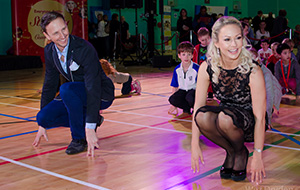 Dance parents. Studio life may be something old hat that you have your own experience of from way back when, or it may be a new journey, learning about costumes, stretching and types of pointe shoe afresh. What happens when your child wants to become a professional dancer? How can you encourage their dreams but help keep their mind focused and their feet on the ground? The dance industry is renowned for its competitiveness and there may be lots to consider.
Dance parents. Studio life may be something old hat that you have your own experience of from way back when, or it may be a new journey, learning about costumes, stretching and types of pointe shoe afresh. What happens when your child wants to become a professional dancer? How can you encourage their dreams but help keep their mind focused and their feet on the ground? The dance industry is renowned for its competitiveness and there may be lots to consider.
Dance, unlike sport, does not have clear steps as to ensuring success. Success in dance may mean many things, as becoming performer, choreographer, casting director, abroad or at home. Dancing is extremely subjective and aesthetic, and there is no correct age to begin focusing on and training for a career in dance. Most dancers train vocationally from 16 or 18, however this has shifted, with institutions preferring to take students at 18 after they have completed school exams and gained some life experience. Often physical assessments are required to ensure the body is ready for intense training, and strong enough to dance fulltime.
Some students begin fulltime training even earlier, attending stage schools where vocational training is balanced with academia. Often additional tutors are required as the hours in the classroom are low in comparison to those in the studio. It is important to gain academic qualifications too where possible, to give students the best possible start in life. It may be useful to seek guidance from those in similar positions, or who have done something similar in the past, as they will understand the requirements of the institution and the questions that may crop up. Training abroad may too be an option, so guidance here is even more important in ensuring the correct decision is made.
Dancing in the heat
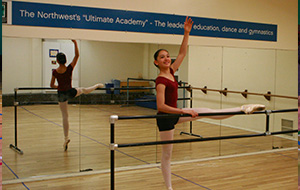 Summer in the northern hemisphere can spell lots of heat for dancers, taking into account the rising temperatures of public transport and hot studios as dancers sweat their classes away. Many drop-in classes and rehearsals continue throughout these months, so – like in the cold weather – it is important to take care of the body.
Summer in the northern hemisphere can spell lots of heat for dancers, taking into account the rising temperatures of public transport and hot studios as dancers sweat their classes away. Many drop-in classes and rehearsals continue throughout these months, so – like in the cold weather – it is important to take care of the body.
In a humid studio, it can be easy to feel very warm and more flexible than usual. Take care not to overstretch or push your flexibility, as muscles can become damaged or even torn through this false sense of security. The muscles will be warmer, but this does not permanently increase their length or pliability, and it can be easy to push them too far. Keep the muscles of the body secure by balancing flexibility with strength, listen to your body and take care not to slip on any sweaty patches on the studio floor!
Ensure you drink plenty of water whilst you are dancing, as dehydration can lead to muscle stiffness. Sweating more than usual means more water is lost as the body tries to keep itself cool, so keep your water levels topped up. You can also eat certain foods to keep cool; for example, cucumbers and watermelon are hydrating due to the high water content, and will also mean you aren’t loading up on heavy foods that can make dancers feel lethargic in the heat.
Whilst class, rehearsal and performance times cannot be dictated by dancers, try to avoid midday exercise when the sun is at its hottest and highest. Cross-training is deemed extremely suitable for dancers, and there are ways to incorporate this into hot summer days, such as swimming or in the air conditioned gym. Longer days mean there is more opportunity to take advantage of these training methods, and the light makes exercising easier too!
The next season for DanceXchange
 DanceXchange, the Midlands-based dance house, recently announced its latest performance season at The Patrick Centre, Birmingham Hippodrome, running from 22 September–3 December 2016. A large and varied programme looks set to delight audiences of all ages, with the autumn season taking dance in the midlands up again after the success of the International Dance Festival Birmingham 2016 earlier this year in May.
DanceXchange, the Midlands-based dance house, recently announced its latest performance season at The Patrick Centre, Birmingham Hippodrome, running from 22 September–3 December 2016. A large and varied programme looks set to delight audiences of all ages, with the autumn season taking dance in the midlands up again after the success of the International Dance Festival Birmingham 2016 earlier this year in May.
The International Dance Festival Birmingham, which is DanceXchange’s largest programme, saw numerous dance performances take place across the city to great acclaim. With the new season of dance for the venue, it is set to offer something for everyone, from the English premiere of a family-friendly show at Christmas, to a visually mesmerising production, pushing the boundaries of both dance and digital technology.
The autumn 2016 season highlights include many delights. An international triple bill from the acclaimed National Dance Company Wales will see the company make their first visit to Birmingham with the production Folk. There will be performance art from the award-winning Alexander Vantournhout in a solo focused on the autobiography of his own body and also a brand new triple bill from 2Faced Dance, which showcases new works from three world-class female choreographers performed by an all-male company of dancers.
Moving away from gender, Alexander Whitley Dance Company’s Pattern Recognition will focus on cutting-edge dance and motion responsive technology, also featuring a score by critically-acclaimed electronic composer Scanner and Southbank Centre artist-in-residence cellist Oliver Coates. The international dance artist Didy Veldman’s The Happiness Project, the first project from her new company Umanoove, looks at combining live music and dance. Finally, there will be The Wolf and Peter, a retelling of Prokofiev’s famous Peter and the Wolf by CoisCéim Dance Theatre. The English premiere of this magical Christmas show for families will be told from the perspective of the Wolf.
